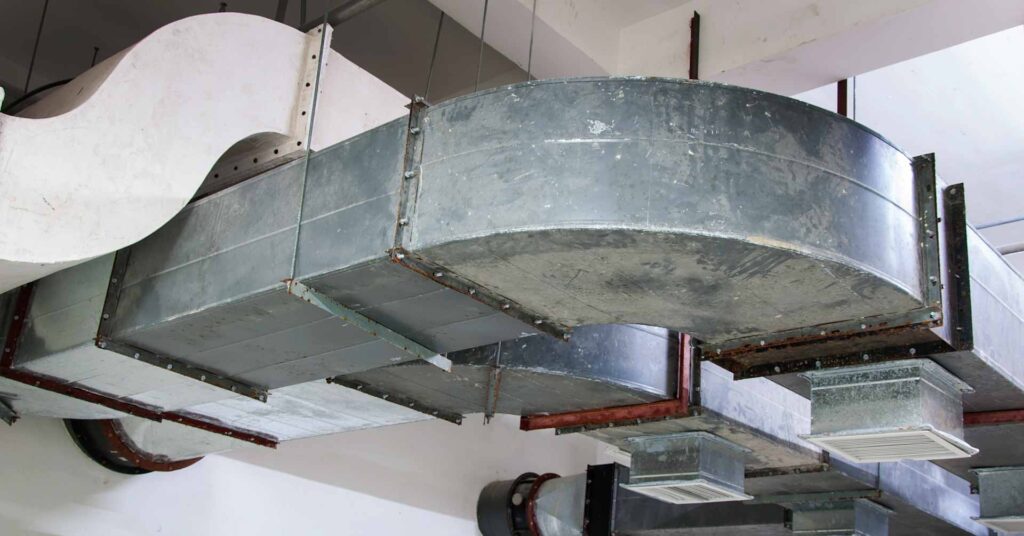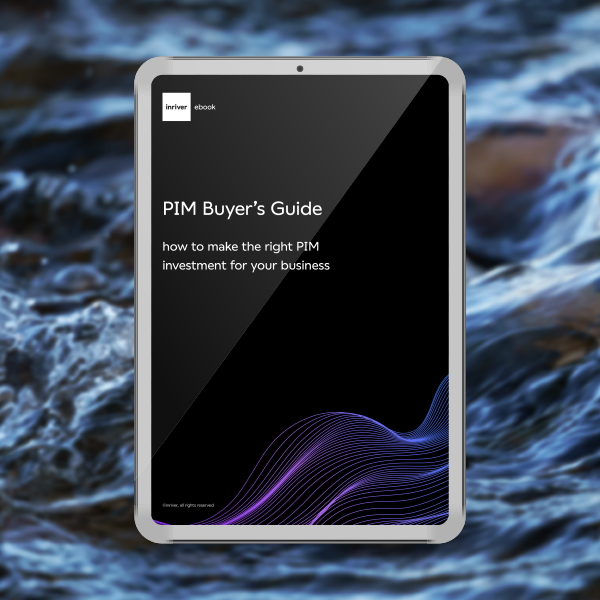What is Product Data Management?
get your product data where it needs to be
Discover the transformative impact of effective data management and see how PIM software meets your needs.
As product journeys evolve from linear (make-use-dispose) to circular (sustainable reuse and recycling), effectively managing product data is more important—and more challenging—than ever.
Like the product cycle, Product Data Management (PDM) is also evolving. Initially created to track products through design stages, modern PDM software allows companies to manage and optimize product data across the entire circular product lifecycle.
For brands, manufacturers, and retailers handling increasingly modern products, PDM is an essential component of the tech stack. When integrated with solutions like PLM, ERP, and PIM, a PDM tool provides the foundation for product data continuity.
Why is product data management important?
Products today are more than just products. Modern products are increasingly complex entities, made up of an exponentially growing number of parts, attributes, and more. Linked to all these parts and attributes is data. Each and every product is connected with a vast network of interconnected data points, on everything from technical specifications to sustainability credentials, to color palettes.
It is no surprise, then, that the average engineer spends 19% of the workweek simply searching for and gathering information. However, it doesn’t have to be this way. In fact, the growing importance of this product data means brands and manufacturers simply can’t continue without ownership of all these product-related data. This has propelled Product Data Management software (PDM) into a business-critical application.
The importance of product data management is clear from the advantages it offers:
- Improved efficiency: By integrating product data from the drawing board to the final product, PDM ensures efficient operations across ideation, research, product development, production, and beyond.
- Greater consistency: As data travels through various teams, PDM systems ensure that each stage of the product’s life is aligned and every department updated, reducing the chances of needless backtracking and costly missteps.
- Enhanced accuracy: In early design and product development phases, a single number or misplaced decimal point can have cascading effects. A PDM tool’s validation and automated compiling tools are essential for minimizing errors, discrepancies, and redundancies from the very start.
In an era where data volumes are skyrocketing and regulatory landscapes are ever-changing, PDM software provides brands, manufacturers, and retailers with an effective way to optimize every link of the product value chain and foster a positive digital transformation.

What is the difference between PDM and PIM?
While Product Data Management (PDM) and Product Information Management (PIM) software are complementary solutions, they serve distinct functions.
PIM software is designed to centralize, refine, and distribute product information—both for internal product management/development and external audiences, like shoppers, regulators, marketplaces, investors, and other stakeholders. PDM software, on the other hand, focuses solely on centralizing and updating technical data for internal use.
To give this more insight, the difference between PDM and PIM may best be understood in the context of what they manage:
- PDM manages back-end product data—such as technical specifications, bill of materials, CAD (Computer-Aided Design) details, regulatory information, and other operational data.
- PIM transforms and packages this raw logistical data into consumer-friendly product information—such as simplified specification sheets, guides, and enriched product catalogs—to fuel the final product experience.
Consider an example: PDM stores the regulatory data needed by engineering teams during product design. PIM then enriches that data and packages it into an easy-to-consume format. This newly refined information effectively communicates the product’s compliance with industry standards, among other use cases.
Whereas PDM aligns internal teams, PIM does this as well as bridges the information gap to a broader external audience—in this case, regulators, stakeholders, and customers.
How does product data management work?
We’ve established that a product data management system consolidates product data from disparate sources into a central repository—but how exactly does it work?
There are three primary steps to product data management:
- Collection: PDM is first integrated with existing business systems, such as ERP, SCM, and CAD programs, to import product data.
- Cleansing: Once collected, PDM tools refine the data. It identifies and rectifies any duplications or inconsistencies, aligning everything to established standards.
- Centralization: The newly formatted data is then stored in a centralized platform, often cloud-based, to facilitate easy access, sharing, and updating by internal teams. This forms a crucial part of the company’s knowledge base.
To sustain this continuous cycle, many brands, manufacturers, and retailers incorporate other data management systems, such as PIM integration. With the right tech stack, product data management systems can serve as the master hub for internal data that stays synchronized throughout the product lifecycle.

Benefits of product data management
With product data governed under a single source, PDM offers brands, manufacturers, and retailers numerous potential benefits:
- Boosted productivity: PDM eliminates productivity killers, such as redundant searches for product data across fragmented systems, scattered spreadsheets, and potentially outdated emails.
- Improved collaboration: By providing centralized access to trusted product data, PDM allows teams to better align their efforts—instilling confidence that everyone is operating on the same page and with the same data.
- Better accessibility: With role-based permissions, all authorized users have self-service access to the latest, relevant product details from a single source.
- Heightened security: Sophisticated access controls, user permissions, and change logs add additional layers of data security and accountability.
With all authorized users accessing the same centralized data, each department is aligned from the same foundation—ensuring regulatory compliance and smooth workflows.
Key features of product data management
PDM systems are engineered to elevate the quality, accessibility, and functionality of product data. When exploring PDM options, consider those that include these key features:
Data quality and standardization
The cornerstone of an effective PDM system is its data reliability. To achieve this, a PDM should be equipped with robust tools dedicated to validating, cleansing, and standardizing product data.
This may involve features such as:
- Configurable validation protocols to ensure new pieces of product data meet certain quality benchmarks
- Data cleansing mechanisms that can detect and correct duplicate or inconsistent data before it gets uploaded
- Data templates and mandatory fields to help standardize inputs and formatting between multiple systems and processes
Such elements play a pivotal role in establishing hygienic data practices, which enhances the quality and trustworthiness of newly added data.

Integration capabilities
For automatic data synchronization across the product lifecycle, PDM software enables seamless integrations with adjacent systems, such as:
- Out-of-the-box connectivity with ERP systems for material management, production capacity, orders, and other internal databases
- Easy integration with PLM solutions for simplified collaboration between engineering and manufacturing departments
- PIM integration to adapt relevant technical data into enriched product information for marketing, sales, product engineering, logistics, and beyond
By integrating into key facets of your tech stack, a PDM empowers brands, manufacturers, and retailers to optimize business-critical data streams and internal data management.
Internal scalability
PDM software should scale to support more products, users, and volumes of data as the business grows. Specifically, this might involve features such as:
- Flexible data models and cloud-native architecture to meet business growth
- Open APIs for extended connectivity beyond standard integrations
- Configurable workflow rules to automate internal review and approval processes
- Data-based analytics that provide operational visibility and drive strategic decisions
Efficiently steering valuable product data works both to accelerate key phases of product development and to lay the groundwork for further expansion.
Internal + external scalability
While a PDM tool flexes to support your growing team, a PIM solution flexes to support your growing team and growing profits.
Advanced PIM solutions are built to allow you to scale into new channels, regions, markets, and categories. Seek out a PIM solution that offers flexible data models, automated workflows, and closed-loop analytics to support your business’s growth to the fullest.

inriver: The solution for all your product data needs
In a global market that’s growing increasingly interconnected, PDM is emerging as an essential tool to keep pace. By centralizing and optimizing product data, PDM powers efficient internal processes, informed decisions, and new scaling opportunities. However, in today’s market, PDM software will only get you so far.
For brands, manufacturers, and retailers, only PIM provides end-to-end product data connectivity that maximizes the value of your product information where you need it most: the customer. The inriver platform combines the power of an advanced PIM system with a fully flexible data model designed to scale with business needs. With further enterprise-ready capabilities, such as syndication and Digital Shelf Analytics, the inriver platform enables users to get the very most out of their products, at every step of the product cycle.
want to see the inriver PIM in action?
Schedule a personalized, guided demo with an inriver expert today to see how the inriver PIM can get more value from your product information.
you may also like…
frequently asked questions
how does a PDM solution streamline product lifecycle management?
By centralizing all product data in one place, PDM improves internal collaboration and efficiency across the product lifecycle. Teams can seamlessly access the product details they need—from product design to launch to maintenance. Workflow management can also be optimized based on how data should flow during each phase, setting defined process steps and responsibilities that can help streamline data bottlenecks.
what are the benefits of integrating product information management with digital asset management?
Connecting PIM and DAM provides a holistic view of products for both internal and external use. While PIM manages enriched product information, DAM houses all digital assets like images, videos, and 3D models. Integrating the two allows relevant assets to be pulled into product content management for better storytelling across channels, employing best practices in content creation.
what is PDM vs PLM?
PDM focuses on managing product data while PLM takes a broader approach to managing the overall product lifecycle. PLM often leverages PDM as a core component for managing underlying product data. The evolution of PDM has led to some functional overlap with other elements traditionally associated with PLM, like project management, process oversight, and quality control.
what are the major components of PDM systems?
Core PDM components include:
- Data validation and standardization
- Streamlined integration capabilities
- Scalable cloud-based platform
- Security and access control
PDM systems may also incorporate configurable workflows to enhance cross-team collaboration, as well as analytics to catalyze key data points into strategic insights.
how does a PDM system support master data management in complex supply chains?
PDM consolidates product data from across the supply chain to eliminate inconsistencies and errors that result when data sits in silos. Workflow automation also makes sure stakeholders follow proper processes for creating, updating, and sharing master data. Data governance principles and robust permissions control prevent unauthorized changes.
